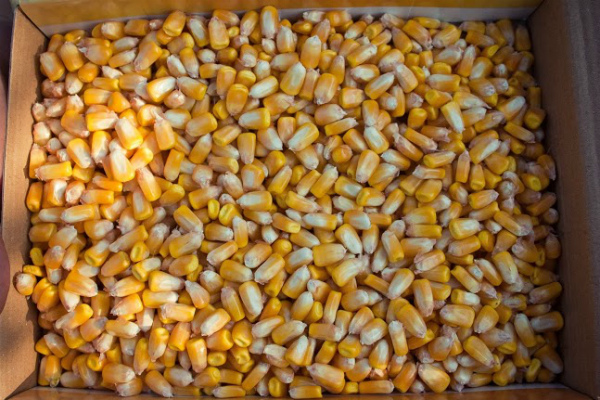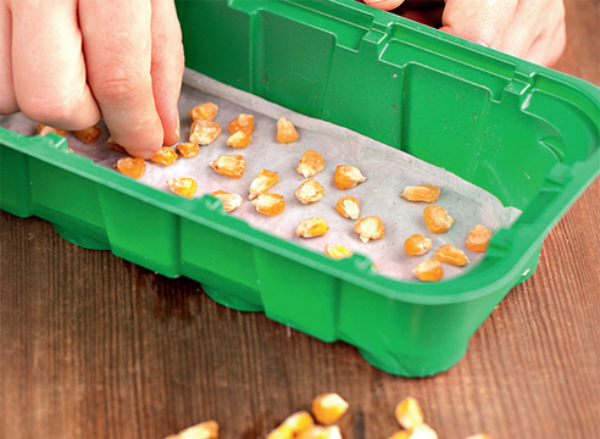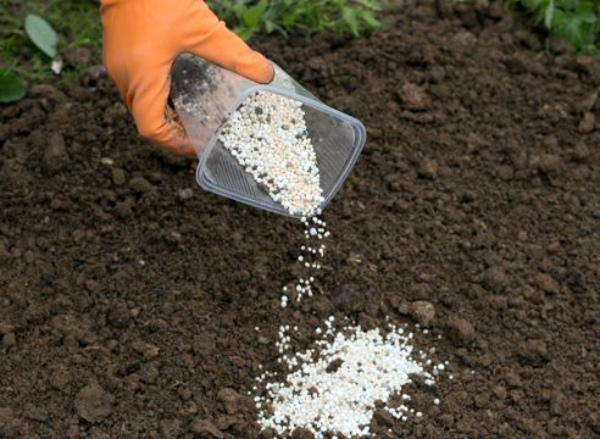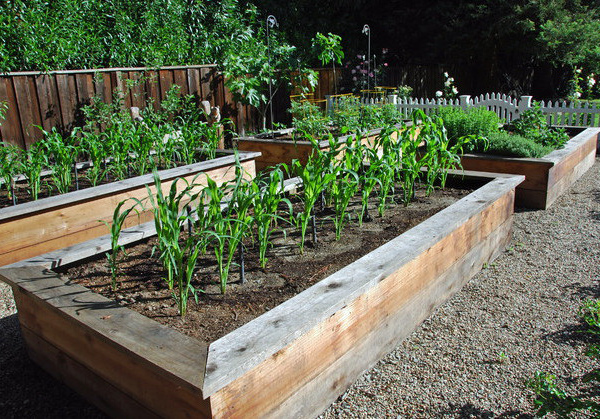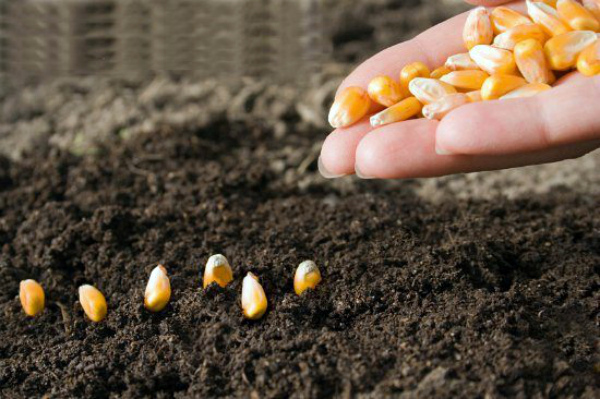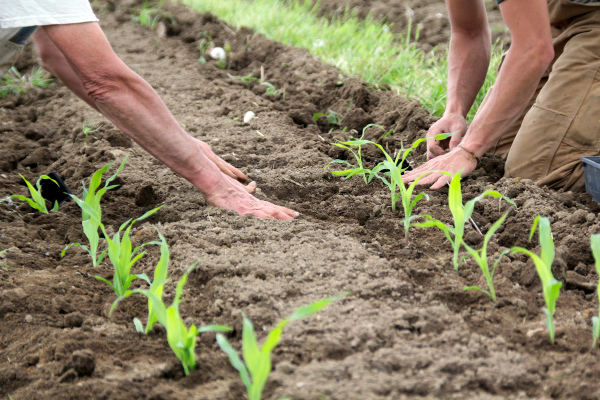Secrets of growing corn
Content
Soil and seed preparation
As always, it is worth starting with soil and seed preparation, as corn is often grown outdoors.
First of all, check what has grown in the garden before. The best predecessors will be legumes, cereals, winter wheat, potatoes. After removing them from the site, proceed to careful plowing of the land to a depth of at least 30 cm, since looseness and oxygenation of the soil is very important for good corn growth. After a few weeks, re-plowing is carried out, combined with treatment with herbicides to destroy weeds. Fertilizers are applied for plowing.
It is important to properly prepare the seed. Only the largest grain should be selected, without damage. It is from it that the best harvest is obtained. Seeds should be checked for germination - put in a 5% saline solution for 5 minutes. Floated grain is not suitable for planting in a personal plot. Grains that have settled to the bottom must be thoroughly washed and dried.
The next stage in the preparation of grains is dressing, which helps to protect the crop from most diseases. This can be done using a powder pesticide (3-8 g of the drug "TMTD" per 1 kg of grains) or a solution of potassium permanganate (5 g of potassium permanganate is dissolved in 1 liter of water). You can also use hydrogen peroxide, which is heated to 50 ° C, and then the grains are left in it for 7 minutes.
Disinfection can be carried out using hydrothermal treatment. According to this method, for 20 minutes, the grain is immersed first in hot water (temperature up to 50 ° C), and then in cold water.
Fertilizer
For the formation of the root system, good growth of the aboveground part of the plant and the development of the ears, the crop needs good soil fertilization. Fertilizer for corn must necessarily consist of:
- phosphorus, which helps the grain to germinate;
- potassium in order to strengthen immunity to numerous diseases and contribute to the growth of green mass in the plant;
- nitrogen to support the growth of leaves and stems;
- calcium, which lowers the acidity of the soil and promotes the formation of root hairs in corn.
For the first time, fertilizers are applied before planting, with deep plowing. For 1 square meter of land you will need: 50-60 g of organic fertilizers, 200 g of potassium, 400 g of superphosphate.
By themselves, organic fertilizers in the form of manure help corn to develop actively, saturating it as much as possible with all the necessary elements. First of all, they promote the development of beneficial microorganisms to the soil, which facilitate the absorption of nutrients.
If the cultivation of corn in the country takes place in an excessively acidic soil, liming should be carried out. To do this, use 3 kg of lime per 10 square meters.
Sowing technology
Sowing corn on the site in the Moscow region begins on May 25.By this time, the soil should be fertilized, treated with weed killers, and the seed itself should be treated and hardened. Soil temperature should be + 10-12 ° С.
First of all, make a layout for landing. There should be about 45-50 cm between the holes so that the root system of each plant does not interfere with the development of neighbors. There should be at least 4 beds nearby to ensure good cross-pollination.
Grain is placed in a pre-moistened hole, 2-3 pieces at a time, for reliability to a depth of 3 cm. The holes are re-moistened and then covered with a film until the first shoots appear.
If you need an early harvest, then the grain is sown in mid or late April to a depth of 4-5 cm. The planting pattern is the same as for conventional cultivation. You can also grow low-growing varieties in a greenhouse, then the culture is ready for planting from the beginning of April, as soon as the air temperature is evenly warm.
Remember that manual seeding is only possible in small areas, for large areas you will need a corn planter.
Growing features
The technology of growing corn is not much different from the cultivation of other plants. You can use grain for planting without first germinating it, or you can grow seedlings. The second method is suitable for areas with a small area, since it is expensive to plant.
Growing from seeds
For growing from seeds, hardened grain is used, which is laid in holes 60 by 30 cm in size. In this case, a corn seeder will come in handy, which will significantly reduce the time spent on planting. In the Moscow region, this procedure is carried out in late April or early May, when the soil temperature does not drop below 12-15 ° C. A few grains in each hole will help you get at least one seed, guaranteed. If all 3 grains sprout, then just remove the weak shoots.
Growing seedlings
The second method of growing is preliminary preparation of seedlings. Usually it is used by summer residents in the northern regions, where the summer is short and the air temperature is not very high. To obtain seedlings, the grain is placed in paper cups filled with a nutrient mixture of compost, sand and peat (2: 1: 1). For half a bucket of the mixture, it is advisable to add 200 g of ash. Each grain is deepened by 3 cm.
Seedlings require top dressing, which is applied 10 days before planting in the garden - usually superphosphate. Regular watering is also important.
Care
Caring for corn, at least for most varieties, is not very difficult. It is necessary to regularly loosen the soil so that the roots receive a sufficient amount of oxygen, thin the seedlings in a timely manner, and also feed them.
With the advent of stepchildren, they must be carefully removed, since they take some of the nutrients from the plant and interfere with the formation of large cobs.
Preventive treatment is important against Swedish flies, wireworms, moths, bacteriosis and other fungal diseases.
Don't be lazy to remove weeds. Despite the developed root system (up to three tiers), weeds, firstly, can become a habitat for insects, and secondly, they take nutrients from the soil that are intended for corn.
At the 5-8 leaf stage, caring for corn includes feeding with potassium, saltpeter, and superphosphate to support root development.
Video "The best variety of corn"
This video is about what sort of corn is best to plant in the Moscow region and how to grow it.

